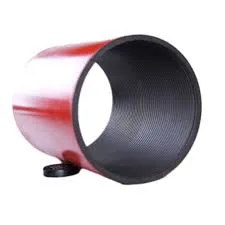- Afrikaans
- Albanian
- Amharic
- Arabic
- Armenian
- Azerbaijani
- Basque
- Belarusian
- Bengali
- Bosnian
- Bulgarian
- Catalan
- Cebuano
- Corsican
- Croatian
- Czech
- Danish
- Dutch
- English
- Esperanto
- Estonian
- Finnish
- French
- Frisian
- Galician
- Georgian
- German
- Greek
- Gujarati
- Haitian Creole
- hausa
- hawaiian
- Hebrew
- Hindi
- Miao
- Hungarian
- Icelandic
- igbo
- Indonesian
- irish
- Italian
- Japanese
- Javanese
- Kannada
- kazakh
- Khmer
- Rwandese
- Korean
- Kurdish
- Kyrgyz
- Lao
- Latin
- Latvian
- Lithuanian
- Luxembourgish
- Macedonian
- Malgashi
- Malay
- Malayalam
- Maltese
- Maori
- Marathi
- Mongolian
- Myanmar
- Nepali
- Norwegian
- Norwegian
- Occitan
- Pashto
- Persian
- Polish
- Portuguese
- Punjabi
- Romanian
- Russian
- Samoan
- Scottish Gaelic
- Serbian
- Sesotho
- Shona
- Sindhi
- Sinhala
- Slovak
- Slovenian
- Somali
- Spanish
- Sundanese
- Swahili
- Swedish
- Tagalog
- Tajik
- Tamil
- Tatar
- Telugu
- Thai
- Turkish
- Turkmen
- Ukrainian
- Urdu
- Uighur
- Uzbek
- Vietnamese
- Welsh
- Bantu
- Yiddish
- Yoruba
- Zulu
Exploring the Features and Applications of J55 Coupling in Oil and Gas Industries
Understanding J55 Coupling The Backbone of Oil and Gas Operations
In the oil and gas industry, the efficiency of operations is fundamentally reliant on the integrity of the connections made between various components, specifically pipes and tubing. One of the crucial components in this domain is the J55 coupling, which plays a pivotal role in ensuring seamless operations within drilling and production processes.
J55 is a designation that describes a specific type of steel grade used in the production of oil country tubular goods (OCTG), particularly in seamless casing and tubing applications. The “J” in J55 refers to the American Petroleum Institute (API) classification, while the “55” indicates a minimum yield strength of 55,000 psi (pounds per square inch). This significant yield strength makes J55 a popular choice in oil and gas applications, particularly for environments that demand robust performance under high-pressure conditions.
Key Features of J55 Couplings
J55 couplings are designed to connect pipes, ensuring a reliable, high-strength joint that can withstand various environmental factors such as temperature changes, pressure variations, and corrosive substances. These couplings are manufactured with precision to guarantee that they meet stringent API specifications. The heat treatment process enhances the mechanical properties of the steel, resulting in a product that is not only durable but also adaptable to different service conditions.
One of the standout features of J55 couplings is their compatibility with various drilling fluids and conditions, making them suitable for both onshore and offshore drilling operations. These couplings facilitate a strong and effective bond between the pipes, which essentially ensures that the integrity of the entire wellbore is maintained during drilling.
Applications of J55 Couplings
j55 coupling

The applications of J55 couplings are extensive, reaching across various sectors within the oil and gas industry. Primarily, they are used in
1. Drilling Operations J55 couplings are essential in connecting the drill strings and casing during exploration and drilling activities. They help in managing the weight of the drill string and the dynamic loads that occur during drilling.
2. Production Services In production wells, J55 couplings ensure that the tubulars can bear the loads and pressures associated with the extraction of hydrocarbons. Their strength is crucial in maintaining operational performance over time.
3. Pipelines Beyond well construction, these couplings can also be utilized in pipeline systems, where the efficient transport of oil and gas is necessary. The coupling provides a secure connection that prevents leaks and potential environmental hazards.
Conclusion
The J55 coupling is more than just a connector; it is a vital component in the oil and gas infrastructure that supports efficient, safe, and reliable operations. Its superior strength and ability to withstand harsh conditions underline its importance in drilling and production processes. As the energy industry continues to evolve, the demand for high-performance materials like J55 will undoubtedly play a significant role in meeting operational challenges and ensuring successful outcomes in exploratory endeavors.
In summary, J55 couplings exemplify the importance of engineering and material science in the oil and gas sector. By facilitating secure, high-strength connections, they contribute to the overall safety and efficiency of operations, embodying the relentless pursuit of technological advancements in extracting the world’s energy resources.
-
Tubing Pup Joints: Essential Components for Oil and Gas OperationsNewsJul.10,2025
-
Pup Joints: Essential Components for Reliable Drilling OperationsNewsJul.10,2025
-
Pipe Couplings: Connecting Your World EfficientlyNewsJul.10,2025
-
Mastering Oilfield Operations with Quality Tubing and CasingNewsJul.10,2025
-
High-Quality Casing Couplings for Every NeedNewsJul.10,2025
-
Boost Your Drilling Efficiency with Premium Crossover Tools & Seating NipplesNewsJul.10,2025







